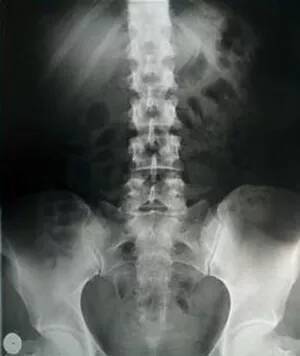Before getting into the causes of back pain, I want to address a common question.
If your back is hurting…do you need an MRI before getting treatment?
We live in a world where medical imaging, though expensive, is readily available.
I had some stomach pain. I went to the doctor and he sent me for an ultrasound of my liver and gall bladder. I called the imaging center and scheduled an appointment for the next day. Showed up. Had the test. Done. (Everything was OK thankfully!)
But is imaging always helpful?
In the case of back pain, not only is it not always helpful, sometimes it is actually detrimental.
The 2 most common types of imaging studies done for back pain are X-rays and MRIs.
They are not interchangeable, as each one has a different purpose…and shows different things.
An X-ray is the more basic image. It shows bones. It doesn’t show muscles or ligaments or any other soft tissue. Just bones.
How is this helpful? An X-ray can be used to determine if there is a fracture, like after a fall or if someone has osteoporosis (weak bones).
It can also be used to see if there is arthritis or degenerative disc disease (by looking at the spaces in between the bones) or to rule out cancer.
Of course, X-rays use radiation…which is obviously not ideal unless absolutely necessary.
MRI’s are much more detailed. They show all the muscles, ligaments and tendons, as well as all the other "stuff" in the body.
Unlike X-rays, MRIs don’t use radiation (though they can be loud and claustrophobic.)
Here is where it gets a little tricky.
Most people have something wrong with their back.
You didn’t misread that. Many people have disc problems in their back…and no pain.
A recent study showed that 30% of 20 year olds had bulging discs with no pain. That number climbed all the way to 84% of 80 year olds who had bulging discs with no back pain.
What does that mean?
It means that MRI imaging should not be used to determine the cause of your pain! You may have had a bulging disc for many years that you had no symptoms from. Then your back starts hurting and the MRI shows a bulging disc…which may have been there for years without causing any pain. This might lead you to make medical decisions that are based on the MRI and not based on your actual problem.
How should an MRI be used?
It should be used to CONFIRM a diagnosis that was reached based on your history and physical presentation.
It always amazes me when people come in for therapy and insist their back pain is due to the bulging disc in their back (they KNOW…because they have the MRI to prove it) but their symptoms are not at all consistent with a bulging disc!
So to answer the question "Do I need an MRI to treat my back pain?"
Usually not.
The best option is to see a physical therapist who can diagnose your back pain based on YOU… not a picture. If the therapist determines that more information is required to properly plot the best course of treatment…they will refer you to your doctor for further imaging studies.

